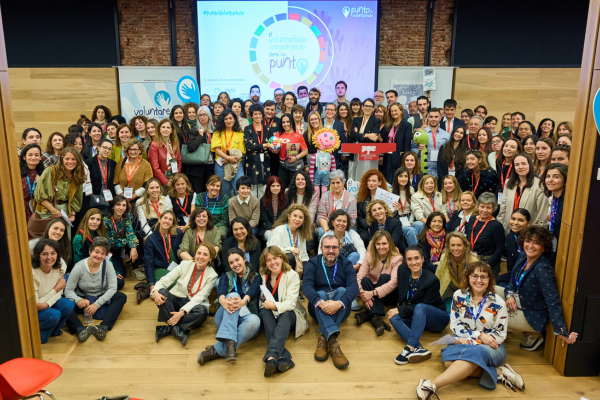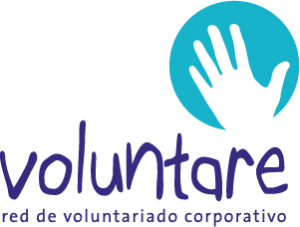1 • Clear objectives
It may seem like common sense, but clear objectives are a surprisingly low priority for many volunteering and giving strategies. How can one be sure that their objectives are, in fact, clear? LBG Canada companies would ask you to consider the following: Are your objectives realistic and achievable? Can they be measured? Do they have set time limitations? Start with these simple questions and you’ll be on your way.
When it comes to employee giving and volunteering, make sure your focus is on what matters most. Read our review on Microsoft’ s program here.
2 • Approved policies and procedures
While policy and procedure may not be the most exiting category to outline and implement, it is this element that will allow your employee volunteering and giving strategy to reward you with smooth operations – and more importantly – peace of mind. Approved policies and procedures include categories such as: criteria for sign-up, management approval, volunteer conduct and volunteer health & safety. Unfortunately, very few companies (and not one participant in the LBG Canada study) has a complete set of policies in place. In 2010, expect to see a major focus on improvement in this area.
For more guidance, be sure to check out this tool Angela and I helped produce “Mapping Success in Employee Volunteering: The Drivers of Effectiveness for Employee Volunteering and Giving Programs and Fortune 500 Performance”.
3 • Executive buy-in
Speaking of smooth operations and peace of mind, nothing will settle the volunteering and giving waters more than executive buy-in. Just don’t forget: buy-in is only the beginning. 77% of the LBG Companies measured have executive buy-in in support of their programs, but less than 36% set targets for any form of participation. Less than half track participation. Ninety-six percent (96%) of companies support employee volunteering, yet only 29% have an organized program to recognize, thank and motivate volunteers. Prove to your execs that they made the right choice when they bought-in: set goals, measure everything, and keep your volunteers happy.
Watch our video for more thoughts on how to create buy-in through proper motivation.
4 • Targets for annual participation & 5 • Tracking participation against targets
At the end of the year, when you’re asked to prove that your program was successful, you will probably say, “Yes, we had a 25% participation rate!” And….after a pause….you will be asked, “And how does that percentage demonstrate success?” Unless you can produce the targets for annual participation that you set at the beginning of the year, you won’t have anything to say. Set targets to demonstrate success and track participation against those targets. By doing these things you will have the information you need to prove success, renew funding and continue your valuable program. It’s that simple.
But remember, participation rates don’t necessarily equal success.
6 • Evaluation of results in order to improve
The more metrics you measure, the more results you will have to apply toward improving your company’s volunteering and giving strategy. The LBG Canada Benchmarking Survey is a clear example of this. With the survey, we can clearly see percentages that tell us the areas that are strong (executive buy-in), areas that need improvement (volunteer recognition), and areas that need to be addressed (clear program objectives). As the results are evaluated, it is important to include every relevant perspective such as: the volunteer, the community partner, and the business.
Find out more on measuring what matters.
7 • A complete communications strategy
Many volunteering and giving strategies are new as Corporate Social Responsibility is a relatively new phenomenon. We see companies scrambling to pull together a haphazard plan in order to to show that they at least have some kind of plan in place. LBG Canada companies, however, are learning together that a haphazard approach is simply not good enough; a complete communications strategy is essential. The goals of the strategy ought to include: methods for motivating involvement, recognizing volunteers, and reporting on program results.
Read more about our thoughts on strategy in this Inc. Magazine interview.
8 • Accountability for commitments
Even with executive buy-in, once a volunteering and giving strategy is implemented, promised involvement will often get lost in the intensity of other business initiatives. In order to keep this from happening, participants must be held accountable. What this looks like will be different for each organization, but should all include the following categories: executive involvement, manager involvement, board of director involvement, and managers required to encourage and support.
Here’s an interesting Case Study on PwC’s community investment program demonstrating the importance of executive buy-in. Especially when things go horribly wrong.
9 • Opportunities for feedback
An easy win for every volunteering and giving strategy can be found in offering direct opportunities for feedback. This allows for a sense of ownership and personal value. Be sure to offer this opportunity to: managers, employees and community partners.
Remember when listening to feedback – not everyone is at the same stage in their volunteer experiences. It’s important to account for this reality when reacting to feedback. Read more about the 3 Stages in the Journey of a Volunteer.
10 • Program flexibility re: employee schedules
When employees choose to be involved in something above and beyond their regular job requirements, one important reason for this is usually the fact that their personal needs are acknowledged. If the only opportunity for a single mom to volunteer takes place after 5:00 on weekdays, she is likely to feel devalued and unwanted. When the program offers flexibility for different levels of availability, employees feel valued and greater participation is possible.
Here are 3 reasons why flexibility is key to a successful employee volunteering strategy.
Fuente: Realized Worth




